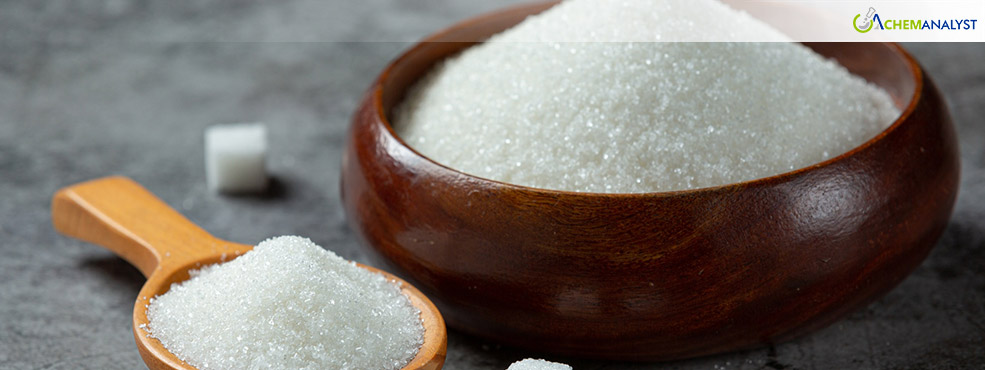Welcome To ChemAnalyst

In May 2025, international sugar markets showed divergent trends in prices between major producing countries based on the complicated combination of supply-side realignments, meteorological conditions, and changing demand patterns. India saw its sugar prices rising further, driven by keen trader buying and firm production during the summer peak crushing season. In contrast, Brazilian and Thai prices were under pressure from developing global surpluses and lackluster demand. Germany's market stayed quite high because of supply-side risk aversion, even with production improvement.
In India, sugar prices continued to rise during the month of May, helped by strong production and favorable market sentiment. The increases in export quotas restricted local supply, adding strength to bullish price directions. Still, business people and businessmen were optimistic about the sufficiency of existing inventory levels, which should be able to cover local demand up to 2025. The government's previous meddling in inventory levels served as a stabilizer, but sustained price hikes could lead to demands for adjustments in policies, such as relaxation in imports or motivating supply balance.
On the supply side, sugar output stood at 257.44 lakh tonnes as of mid-May, as per ISMA, with Tamil Nadu and South Karnataka likely to add more in the upcoming special crushing season. Although stocks are currently satisfactory, picking up export activity may bring localized supply tightness. Domestic consumption estimates of 280 lakh tonnes and anticipated exports of 9 lakh tonnes indicate a closing stock of about 52–53 lakh tonnes—adequate for short-term stability.
Prices of Brazil's sugar fell dramatically in May under pressure from a worldwide overproduction and softening demand. Even after initial weather-related disruptions, mill production was unchanged as producers preferred producing sugar over ethanol given healthy margins. Nevertheless, logistical limitations and lack of overseas pace kept inventories high, which depressed prices. Exports of sugar fell by almost 20% on a yearly basis due to less foreign interest and heightened competition in major markets. This excess-oriented atmosphere has maintained market sentiment low and futures in pressure.
Thai sugar market also remained in its downward course since better weather and positive harvest forecasts supported output prospects. Nevertheless, world demand remained subdued, constraining Thailand's pricing power. Increasing stockpiles, coupled with changing consumer trends toward reduced-sugar products, posed structural problems to the recovery of demand, particularly for food and beverage processing segments.
Conversely, Germany kept sugar prices elevated in May, backed by weather-driven supply worries and cautious industry sentiment. An increase in white beet sugar production and steady export activity—reflected in 1,780 shipments abroad—emphasized Germany's status as a sound exporter. On the back of these successes, climate volatility and policy uncertainty still hang over the long-term prognosis.
ChemAnalyst expects the Sugar market to remain volatile in the coming months amidst fluctuating fuel prices and trade developments.
We use cookies to deliver the best possible experience on our website. To learn more, visit our Privacy Policy. By continuing to use this site or by closing this box, you consent to our use of cookies. More info.
